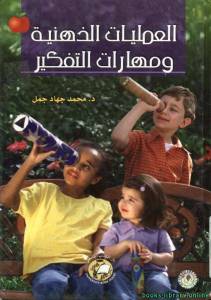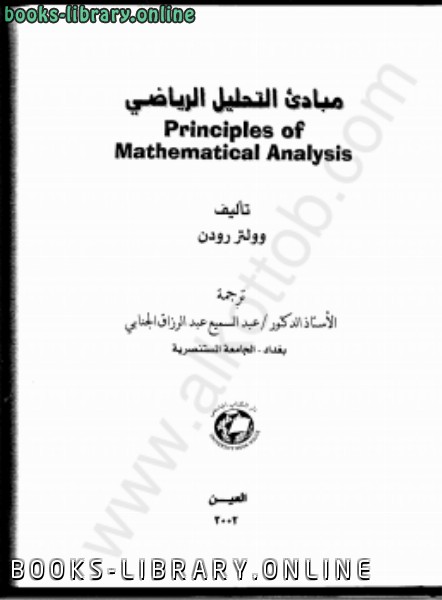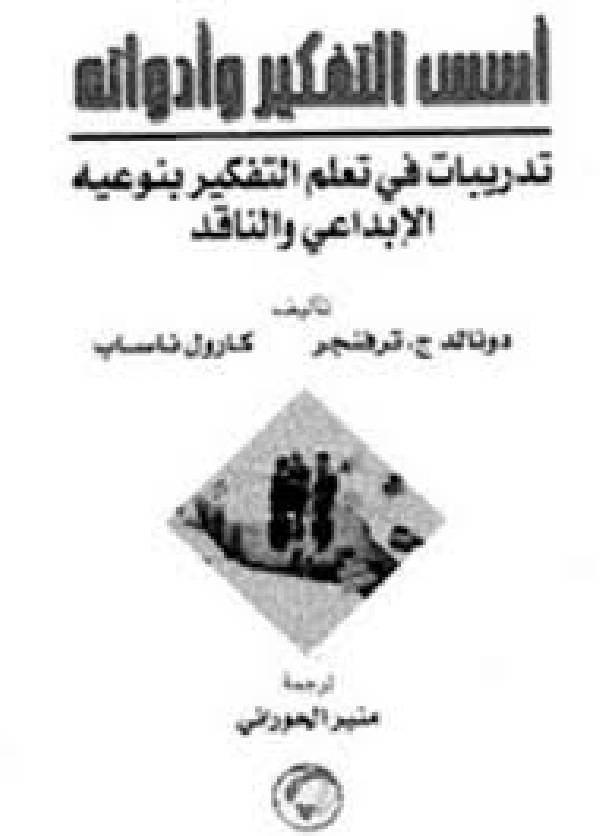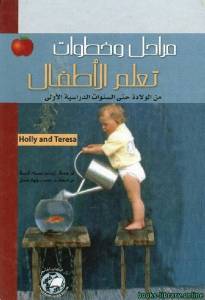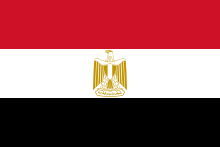📘 ❞ Relations between East and West – Various Studies: Medieval and Contemporary Ages ❝ كتاب اصدار 2017
كتب الادب التاريخى - 📖 كتاب ❞ Relations between East and West – Various Studies: Medieval and Contemporary Ages ❝ ــ مجموعة من المؤلفين 📖
█ _ مجموعة من المؤلفين 2017 حصريا كتاب ❞ Relations between East and West – Various Studies: Medieval Contemporary Ages ❝ عن دار الكتاب الجامعي 2024 Ages: This volume contains the results of some studies presented by Egyptian Italian scholars at International Conference "Peace buiding XI XVI c ", organized in Cairo on October 27, 2016 Unity research of, as part academic activities Bilateral Project "History Peace building: peaceful relations (11th 15th century)" carried out jointly Institute Mediterranean Europe History CNR (Italy), under supervision University Damanhour The project is totally funded Academy Scientific Research Technology (ASRT) Arab Republic Egypt National Council (CNR) The purpose even aforementioned to carry order examine through study different types documentary narrative sources; nature, quantity quality Christians Muslims a geographical area extending from Iberian Peninsula Levant chronological interval eleventh fifteenth centuries Needless say that since it an project, researchers will devote particular attention their these two areas In this book we can find first contributions Units important theme complex relationships Christian world Islamic one, which characterised almost all Middle much Modern Age gravitating around Sea researchers’ aim focus episodes, areas, persons moments represent incidents cases coexistence connection, with fruitful exchanges various kinds knowledge, general context military, religious ideological cultural conflict offer diachronic key, would allow understand development selected geographic temporal boundaries, decided arrange essays order, according subject being considered them allows observe initial political reactions Byzantine Empire other Western institutions effects early expansion, rapidly conquered territories politically targeting for It was certainly phase confrontation which, however, prepared base deep interchanges extended parts entire large regions Europe, future cohabitation be born, ones, same Peaceful examined Mamluk (1250 1517 AD) Hebron focusing case Waqf built honor Prophet Abraham Tamim ibn Aws al Dari, convert Islam Muhammad Sanctuary’s income endowments were also destined hospitality poor, travelers, Jews pilgrims way Holy Places sources show, therefore, useful example how nations should based interconnection mercy, stem violence hatred, achieve do not cover only persons, but goods, ideas, artists artisans, technical artistic models intertwined shores Sea, shown glass rock crystal manufacts Fatimid origin attesting intense existing Norman court Sicily, established exchange gifts rulers confined economic sphere one broad sense (lato sensu), seem confirmed "Arabisation" program, created capital kingdom Another article dedicated analysis difficult attempts build peace eastern sector Mediterranean, main actors area: Seljuk Sultanate In case, text’s author focuses 1162 CE visit Constantinople Sultan Kilij Arslan II basileus Manuel I Comnenus Perhaps initiative consolidate his before expansion authority Entities present area, basileis tried maintain balance Imperial interests region Christians save Peaceful relations, during periods maximum military them, such following recapture Jerusalem Saladin See policy followed Baibars, who granted Monastery Mount Sion many exemptions privileges already Pope Alexander III edict 1178, adding more donations rights sultan later sultans than centuries; very favorable condition allowed those monks link Given importance topic Crusades another essay devoted analyse detail Muslim authorities ran visits reconquered Islam, reaction several European powers To have been examined, trying seize if truly animated spirit tolerance, start period West, instead continuing wars, conflicts clashes sides Or, rather, merely attempt manipulate times human history made text, providing anthropological reading figure great importance, legendary historical amount people believed existence: Prester John, whose legend has helped shape Crusaders Fifth Crusade Just paid possible role may had influencing minds shaping real events negotiations reconciliation among Latin beaches city Damietta throughout analysed Project, there text royal cities Crown Aragon, fourteenth sixteenth centuries, territory chosen view presence numerous communities imprint they left here just started using type Llibres d"Ordinacions along municipal connected are provisions power municipalities, life rule preserve public Hence, utility strategies maintenance daily research, special ordinacions Sardinian next embraces chronologically late Early reconstruction diplomatic Powers peninsula, papal Curia second half century intensified egyptian autonomy opposition Istanbul, expansionism worryied Another consequence increase realisation trips African country, about account informimg italian readers social, cultural, economic, well terms struck travelers observers As study, account: Viaggio dell’Egitto, dell’Arabia, del mar Rosso et Monte Sinai Filippo Pigafetta, behalf Roman 1576 1577, provide detailed description Ottoman shores, Nile Red Sea’s coast commercial potential Papal State considerable interest continue limited indicated dealing , propose new interpretations insert Project’s partner texts, scholars’ attention, Italy country: Hungary, attractive entity key whole obvious implications worldwide geopolitical order: Soviet invasion 1956 Israeli war 1967 show bilateral 1956, addition close Suez crisis Hungarian uprising direct aggression against situation, crises influenced focused Hungary"s support (in nationalisation Canal Anglo French Egypt), connections sets interesting aspect, because relatively few connection and, basing archival scientific literature derived seems coincidence paper focuses, instead, crisis, significant personal illustrating test Age, documents Embassy Damascus, Communist Party newspapers, Arabs Israelis, Socialist Syria sectors Finally, believe researches begun occasion results, surely necessary time, highlight caution give balanced visibility characters mutual interchange Based amicable spirit, etics, members intend proceed initiatives sure make contribution no matter small is, fundamental contemporary world: improvement understanding Westerners Muslims, overcome harmful stereotypes ever better Prof Ali El Sayed ASRT Principal investigator Damanhour Dr Luciano Gallinari CNR كتب الادب التاريخى مجاناً PDF اونلاين تاريخ الأدب هو التطور التاريخي للكتابة النثرية والشعرية التي تقدم للقارئ أوالمستمع أوالمشاهد المتعة والثقافة والعلم فضلا التقنيات الأدبية المستخدمة ايصال هذه القطع ببعضها ليست كل الكتابات أدباً بعض المواد المسجلة خطياً كبيانات مثال (سجلات الشيكات) لاتعتبر وهذه المقالة تعنى فقط بتطور الأعمال السابق تعريفها

كتاب
Relations between East and West – Various Studies: Medieval and Contemporary Ages
ــ مجموعة من المؤلفين
صدر 2017م عن دار الكتاب الجامعي
كتاب
Relations between East and West – Various Studies: Medieval and Contemporary Ages
صدر 2017م عن دار الكتاب الجامعي-
مساهمة من: د. عبدالله عبدالعاطي النجار
( الأربعاء 2 أغسطس 2023 ( 10:50 مساءً )) - تبليغ عن سوء استخدام
This volume contains the results of some studies presented by Egyptian and Italian scholars at the International Conference "Peace buiding between East and West XI-XVI c.", organized in Cairo on October 27, 2016 by the Egyptian Unity of research of, as part of the academic activities of the Bilateral Project "History of Peace-building: peaceful relations between East and West (11th - 15th century)" carried out jointly by the Institute of the Mediterranean Europe History of the CNR (Italy), and under the supervision of and the University of Damanhour. The project is totally funded by the Academy of Scientific Research and Technology (ASRT) of the Arab Republic of Egypt and the Italian National Research Council (CNR) .
The purpose of the Bilateral Project - and even of the aforementioned International Conference - is to carry out research in order to examine through the study of different types of documentary and narrative sources; the nature, quantity and quality of peaceful relations between Christians and Muslims in a geographical area extending from the Iberian Peninsula to the Levant in a chronological interval between the eleventh and the fifteenth centuries. Needless to say that since it is an Italian-Egyptian project, the researchers will devote particular attention in their studies to the relations between these two geographical areas.
In this book we can find the first contributions of some scholars of the two Research Units on the important theme of the complex relationships between the Christian world and the Islamic one, which characterised almost all the Middle Ages and much of the Modern Age in the area gravitating around the Mediterranean Sea.
The researchers’ aim is to focus their studies on episodes, geographical areas, persons and moments which represent incidents and cases of peaceful coexistence and connection, with fruitful exchanges of various kinds of knowledge, even in a general context characterised by military, religious and ideological-cultural conflict.
In order to offer a diachronic key, that would allow to understand the development of the theme in the context of the selected geographic and temporal boundaries, we decided to arrange the essays in the book in a chronological order, according to the subject being considered by them. This allows to observe the initial military, political and cultural reactions of the Byzantine Empire and other Western institutions to the effects of the early Arab expansion, which rapidly conquered territories politically targeting the Western world for centuries. It was certainly a phase of confrontation which, however, prepared the base for a deep cultural interchanges in extended parts of the entire Mediterranean area and large regions of Europe, from which future cohabitation would be born, even peaceful ones, in the same territories.
Peaceful relations examined even in the Mamluk Age (1250-1517 AD) in Hebron focusing the attention on the case of the Waqf built in honor of the Prophet Abraham by Tamim ibn Aws al-Dari, a Christian convert to Islam from the Prophet Muhammad. The Sanctuary’s income and endowments were also destined to the hospitality of the poor, travelers, and Christians and Jews pilgrims on their way to their Holy Places. The sources show, therefore, a useful example of how the relationships between different nations should be based on the interconnection and mercy, in order to stem the violence and hatred, and to achieve a peaceful coexistence.
The relations do not cover only the persons, but also goods, ideas, artists / artisans, technical knowledge, artistic models that intertwined between the different shores of the Mediterranean Sea, as shown by the glass and rock crystal manufacts of Fatimid origin attesting the intense and peaceful relations existing between the Norman court of Sicily, and the Egyptian one, also established by the exchange of gifts between the rulers. Relations not only confined to the political and economic sphere but also to the cultural one in the broad sense (lato sensu), as it would seem confirmed by an "Arabisation" program, created in the same capital of the Norman kingdom.
Another article is dedicated to the analysis of the difficult attempts to build peace in the eastern sector of the Mediterranean, between two of the main political actors of this area: the Byzantine Empire and the Seljuk Sultanate. In this case, the text’s author focuses on the 1162 CE visit in Constantinople of the Seljuk Sultan Kilij Arslan II to the basileus Manuel I Comnenus. Perhaps it was an initiative to consolidate his Sultanate before the expansion and authority of the Byzantine Empire and other political Entities present in the area, that basileis tried to maintain in an useful balance to the Imperial interests in the region.
Christians and Muslims tried to save and maintain Peaceful relations, even during one of the periods of maximum military confrontation between them, such as that following the recapture of Jerusalem by Saladin. See the example of the policy followed by the Mamluk Sultan Baibars, who granted the Monastery of Mount Sion many exemptions and privileges already granted by the Pope Alexander III with an edict in 1178, adding even more donations and rights. The initiative of the sultan was later confirmed by the following sultans for more than two centuries; a very favorable condition that allowed those monks to be a peaceful link with Europe.
Given the importance of the topic and context - the Crusades - another essay of this volume is devoted to analyse in detail not only how the Muslim authorities ran the visits of Christians and Jews to the Holy Places reconquered to Islam, but also the reaction of several Western European powers. To this purpose Arab and Western sources have been examined, trying to seize if Muslim authorities were truly animated by a spirit of tolerance, in order to start a period of peace between East and West, instead of continuing with wars, conflicts and clashes between the two sides. Or, rather, if it was merely an attempt by the rulers to manipulate politically in such difficult times of the human history.
Another analysis of the Crusades is made in a different text, which is dedicated to providing a cultural and anthropological reading of a figure of great importance, legendary but also historical -for the amount of people who believed to his existence: Prester John, whose legend has helped to shape the history of the conflict between Crusaders and Muslims during the Fifth Crusade. Just as much attention it has been paid to the possible role that this legend may have had in influencing Muslim minds and in shaping the real events of the peace negotiations and reconciliation among the Latin Christians and Muslims on the beaches of the Egyptian city of Damietta.
In order to observe the relations between Christians and Muslims throughout the geographical area analysed by the Bilateral Project, in this book there is a text devoted to these relations in different royal cities of the Crown of Aragon, between the fourteenth and sixteenth centuries, a territory chosen as the first case study of the Iberian Peninsula in view of the presence of numerous Muslim communities and the deep cultural imprint they have left there. The study - here just started - is made using a particular type of documentary sources - the Llibres d"Ordinacions - which, along with other municipal sources connected to them, are the provisions of royal power through the municipalities, whose life they rule with the purpose to preserve and maintain the public order. Hence, their great utility for the study of coexistence and strategies for the maintenance of peace between Christian and Muslim communities in daily life. In this first phase of research, special attention is devoted to the ordinacions of Sardinian cities.
The next article embraces chronologically the late Middle Ages and the Early Modern Age. It is dedicated to the reconstruction of the political and diplomatic relations between the Mamluk Sultanate and the Powers of the Italian peninsula, with special attention to those existing with the papal Curia in the second half of the fifteenth century. Relations intensified also for the egyptian policy of autonomy and opposition to the Sultan of Istanbul, whose expansionism in Europe and in the Mediterranean worryied more and more the Italian and European Powers. Another consequence of this increase of diplomatic relations with Egypt was the realisation of numerous trips in the African country, about which there are account informimg European and italian readers of different social, cultural, political and economic, as well as geographical terms that struck the travelers / observers. As a case study, the essay focuses on one of these account: The Viaggio dell’Egitto, dell’Arabia, del mar Rosso et del Monte Sinai by Filippo Pigafetta, carried out on behalf of the Roman Curia between 1576 and 1577, whose main aim was to provide a detailed description of the Ottoman expansion along the Mediterranean shores, the Nile and the Red Sea’s coast and the commercial potential for the Papal State.
In view of the considerable interest to continue the analysis of the relations between the Western world and the Islamic one, not limited only to the chronological period indicated in the Bilateral Project - dealing only with the Middle Ages -, and in order to propose new interpretations of these relations, it was decided to insert in the present volume two essays on the relations between the Bilateral Project’s two partner in the Contemporary Age.
In these two texts, the scholars’ attention, however, is not confined to Egypt and Italy but it was extended also to another European country: Hungary, an attractive political entity examined in two key moments of the whole history of Europe and the Mediterranean Sea, with obvious implications for the worldwide geopolitical order: the Soviet invasion of 1956 and the Arab-Israeli war of 1967.
The main aim of the first essay of Contemporary History is to show the peaceful bilateral relations between Egypt and Hungary, and Egypt and Italy during the events of 1956, in addition to the development and the close interconnection of the Suez crisis and the Hungarian uprising on 1956. The same attention has been dedicated to the direct effects of the aggression against Suez on the Hungarian situation, and how this two crises influenced one another. The first part of the text is focused on Hungary"s support to Egypt (in the nationalisation of the Suez Canal and the Anglo-French-Israeli aggression against Egypt), and on the connections between the two sets of events. This is an interesting aspect, because there are relatively few studies on this connection and, basing on archival sources and scientific literature derived from them, it seems that there was not just a temporal coincidence between the Suez crisis and the Hungarian one on 1956 .
The second part of the paper focuses, instead, on the Italian support role during the Suez crisis, and on some significant personal episodes, illustrating how deep were the Italian-Egyptian relations.
The second test dedicated to the Contemporary Age, however, based on archival documents of the Hungarian Embassy in Cairo and Damascus, as well as on the documents of the Communist Party and the newspapers, it focuses on the analysis of the Hungarian-Egyptian relations during the war of 1967 between Arabs and Israelis, focusing on Hungarian and Socialist support in Egypt and Syria in the military, economic and political sectors.
Finally, we believe that these early researches - in some cases begun only in occasion of this Bilateral Project - start to show some initial results, surely the subject of future necessary research and, at the same time, that they highlight the necessary scientific caution that scholars should have in their research and study to give a balanced visibility to episodes, moments and characters that allow to observe a peaceful coexistence and mutual interchange between the Christian/Western world and the Islamic one.
Based on this amicable spirit, and with this etics, Egyptian and Italian members intend to proceed in future initiatives of this Bilateral Project, sure they can make a contribution - no matter how small it is,- to a subject of fundamental importance for the contemporary world: an improvement of mutual understanding between Westerners and Muslims, to overcome harmful stereotypes and to achieve an ever better coexistence.
Prof. Ali El Sayed
ASRT Principal investigator - University of Damanhour
Dr. Luciano Gallinari
CNR Principal investigator - Institute of Mediterranean Europe History
Aly A. El-SayedLuciano Gallinari
#3K
0 مشاهدة هذا اليوم#34K
13 مشاهدة هذا الشهر#120K
163 إجمالي المشاهدات
-
🎁 كن أول كاتب اقتباس في هذه الصفحة واحصل على هديّة 15 من النقاط فوراً 🎁









